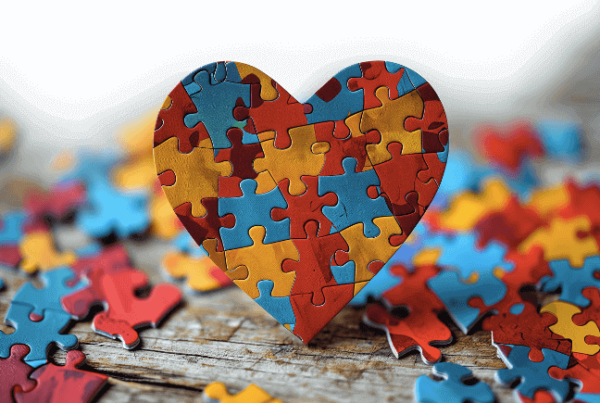We can find advice for how to improve our mental wellbeing everywhere these days. It can be found in leaflets at the doctor’s office, in advertisements claiming to have the latest quick fix, and on social media. But what really is wellbeing and how do we get it?
We sometimes confuse wellbeing with happiness, or some kind of lasting feeling of comfort. However, these outcomes can be unrealistic to strive for in the longer term. Sure, you may be able to practice techniques that give you a sense of happiness or comfort there and then, but in the longer term, life is full of ups and downs for us all.
With the way our brains work and the continuously changing circumstances we find ourselves in, we will go through both good and more difficult times in our lives which includes a whole spectrum of emotions in an ongoing and unpredictable flow of time and events. Therefore, if we aim to be happy or comfortable all the time, we are setting ourselves up for failure and struggle.
Wellbeing Is A Toolkit: Develop Your Toolkit To Flexibly Deal With The Ups And Downs Of Life
What would be a more helpful way to think about wellbeing?
Emotions are natural, and we experience them for a reason. They are there to help us, even when it feels like they are working against us and all we want is to get rid of them or replace them with more comfortable ones. Realising this is part of the answer to the questions above because it is not the absence or presence of different emotions that determine our wellbeing, it is the tools we use to deal with them and the attitude we have towards them.
For example, someone who is feeling down may use the tool ‘self-isolation’ to cope. They isolate themselves at home on the sofa, doing as little as possible.
Another person might do the same, but adding the tool ‘self-soothing’, and spend their time at home with some pleasant music, a nice blanket, and a cup of tea. A third person may pick up the tool ‘behavioural activation’, in which case they go out to see some friends or take steps to do some physical activity that they have enjoyed in the past.

Different people will have different tools in their toolbox and each person will have their own unique experience of the same tools. It is therefore not a ‘one size fits all’ when it comes to taking care of one’s wellbeing. However, there are some general principles and techniques that have been shown to be useful for many, which I will exemplify further down.
Before thinking about adopting new tools, it is usually helpful to become aware of the ones you are already using. Some example questions you can ask yourself to start exploring current tools are listed below.
- How do I react when I feel afraid?
- How do I treat myself when I feel sad?
- How do I talk to myself with my inner voice?
- Which ones of these are helpful to me and which ones are not?
With this in mind, we may want to pause for a moment before jumping to conclusions about which tools would be more helpful. Finding helpful tools is not always straightforward and never perfect.
For example, one might say that using the tools ‘taking some time out and doing some deep breathing’ is a great way to deal with anxiety. It is likely to work as a way of relieving the anxiety there and then, yes, but what if you will have to face the situation again and again? Maybe the tool ‘facing and overcoming the fear’ might work better?
Sometimes our emotions are trying a bit too hard to make us avoid a situation, even when the situation is not dangerous. We then have to demonstrate to our mind that it can safely lower its guard.
When we let emotions like anxiety drive us to avoid things, it’s like telling the anxiety ‘I was safe because you made me avoid the situation’. At such times, it can be more helpful to confront the anxiety and stay in the situation until the anxiety realises that it is not needed and can let go of its hold a bit.
The same complexity often comes with managing other emotions and the tools we use to deal with them, and it can therefore be useful to make a note of what seems to work and what doesn’t. As self-awareness grows and tools for dealing with one’s experiences are sharpened, confidence is likely to follow. With such confidence comes opportunities for a fuller and freer experience of one’s life.
Are there any pointers toward where to start?
In general, increasing one’s emotional awareness, having multiple different tools ready to hand, and being brave while faced with difficult emotions can be helpful. Emotional awareness just means noticing what emotions you are experiencing.
This can be practiced by regularly checking in with oneself about how you are feeling; ‘How am I feeling right now?’, ‘What is my response to how I am feeling?’, and ‘How does that work out for me?’ This may be experienced as frightening at first, as we sometimes try to avoid taking such an honest and direct look at ourselves. However, it is important to remain brave and voluntarily take the necessary steps into the unknown.

How To Develop Wellbeing Tools
Here are some general principles that might help as guides to developing one’s wellbeing tools.
| 1) Comfort is not the goal |
|
| 2) Voluntarily confronting and overcoming anxiety leads to confidence |
|
| 3) Activity lifts mood |
|
| 4) Embracing grief |
|
| 5) Self-compassion is more useful than self-criticism |
|
| 6) Gratitude is a gateway to happiness |
|
| 7) Relationships are complicated and essential |
|
The Bottom Line
As you can see, this text does not go into depth about any of the many topics it mentions. It is best used as a guide towards what you want to learn more about. You can look up the various terms and concepts in the text to find further information on YouTube.
It is probably also worth mentioning the books ‘Why Has Nobody Told Me This Before’ by Julie Smith, ‘The Compassionate Mind’ by Paul Gilbert, and ‘The Happiness Trap’ by Russ Harriss, all of which offer evidence-based tools to improve one’s wellbeing.




